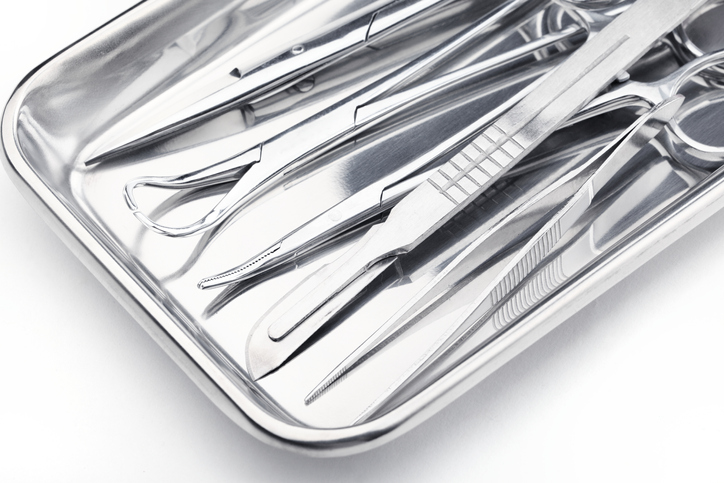
Obesity is a serious, chronic, treatable, and global disease epidemic. Over 98 million people currently have the disease of obesity, and in a recent New England Journal of Medicine article, Harvard researchers predicted that by 2030, 50% of the population in the United States will have the disease of obesity.
Type 2 diabetes (T2D) is significantly associated with obesity. While many people with obesity do not have diabetes, most people with T2D have the disease of obesity. Excess adiposity (body fat storage), which is present in obesity, contributes to many chronic diseases beyond T2D. These include high blood pressure, heart disease, and non-alcoholic fatty liver disease, which is becoming the number one reason for liver transplant across the globe.
Study points to benefits of weight-loss surgery beyond reversing diabetes
Metabolic surgery, also known as weight-loss surgery and bariatric surgery, can be an effective way to lose excess weight and keep it off. Two of the more popular procedures are gastric bypass and sleeve gastrectomy.
We have known for many years that weight-loss surgery has a positive impact on cardiometabolic risk factors, including high cholesterol, high blood pressure, and abdominal obesity. It is also the most successful treatment for remission of T2D, which is another cardiometabolic risk factor.
A recent study published in JAMA set out to determine whether the beneficial effects of weight-loss surgery on cardiometabolic risk factors translated into improved cardiovascular (CV) outcomes in people with obesity and T2D. To do so, they compared CV outcomes (death, heart attack, stroke, heart failure, kidney disease and atrial fibrillation) in 2,287 adults with T2D and obesity who underwent weight-loss surgery against CV outcomes in 11,435 adults with T2D and obesity who did not have weight-loss surgery.
The researchers found that weight-loss surgery in people with T2D and obesity reduced the risk of death by about 40% over the eight years of observation. In fact, weight-loss surgery resulted in a significant benefit for all CV outcomes compared to no surgery. These study results illustrate the benefit of weight-loss surgery for both diabetes remission and heart disease risk reduction.
This was a large study with many patients in both the surgery and no-surgery groups. The researchers did a comprehensive analysis of the data, and controlled for many differences in the groups, including age, sex, body mass index (BMI), and average blood sugar level. The study authors appropriately acknowledge that since the study was observational, it cannot be seen as conclusive. A randomized trial of patients moving forward is needed to determine whether weight-loss surgery actually caused the beneficial outcomes.
Weight-loss surgery re-engineers our bodies’ drive to store fat
The human body is incredibly engineered to promote fat storage; weight loss induces physiological changes that promote regaining of lost weight. This survival mechanism is hard to overcome by lifestyle interventions like diet and exercise alone.
Weight-loss surgery leads to physiologic changes that help regulate excess body fat, thereby promoting fat loss. For example, it influences metabolism, and can help you lose weight more efficiently and maintain the lost weight more effectively. These changes cannot currently be replicated with nonsurgical interventions in their entirety.
Our genes also play a large role in the disease of obesity and our tendency to store extra fat, given an environment in which we are surrounded by inexpensive, unhealthy, supersized food options. Genetics also plays a large role in the development of diabetes.
This helps explain why reversing diabetes can require re-engineering our physiology through a combination of specific lifestyle changes, medications, and surgery. As illustrated by this study, the remission of diabetes and obesity may prevent a host of future complications such as heart disease and stroke.
Who should consider weight-loss surgery?
No one wants to have surgery, but when a surgical intervention produces the greatest odds of disease remission, we must consider it to get the best long-term outcome. We see this for example in cancer treatment, where a combination of surgery, medication, and radiation is used to produce the best chance of remission.
All people with T2D and obesity (a BMI greater than or equal to 35) should strongly consider metabolic surgery to reverse their diabetes and, as this study suggests, potentially prevent future heart attacks, stroke, and other cardiovascular complications. Metabolic surgery is increasingly safe, and currently has the same risk profile as having your gallbladder removed; less than 1 out of 1,000 people have a risk of death from the surgery itself.
If you have T2D and obesity, an evaluation at a comprehensive multidisciplinary obesity treatment center can help you understand your individual risks and benefits for metabolic surgery and can help with medications and lifestyle interventions if you choose not to undergo surgery.









